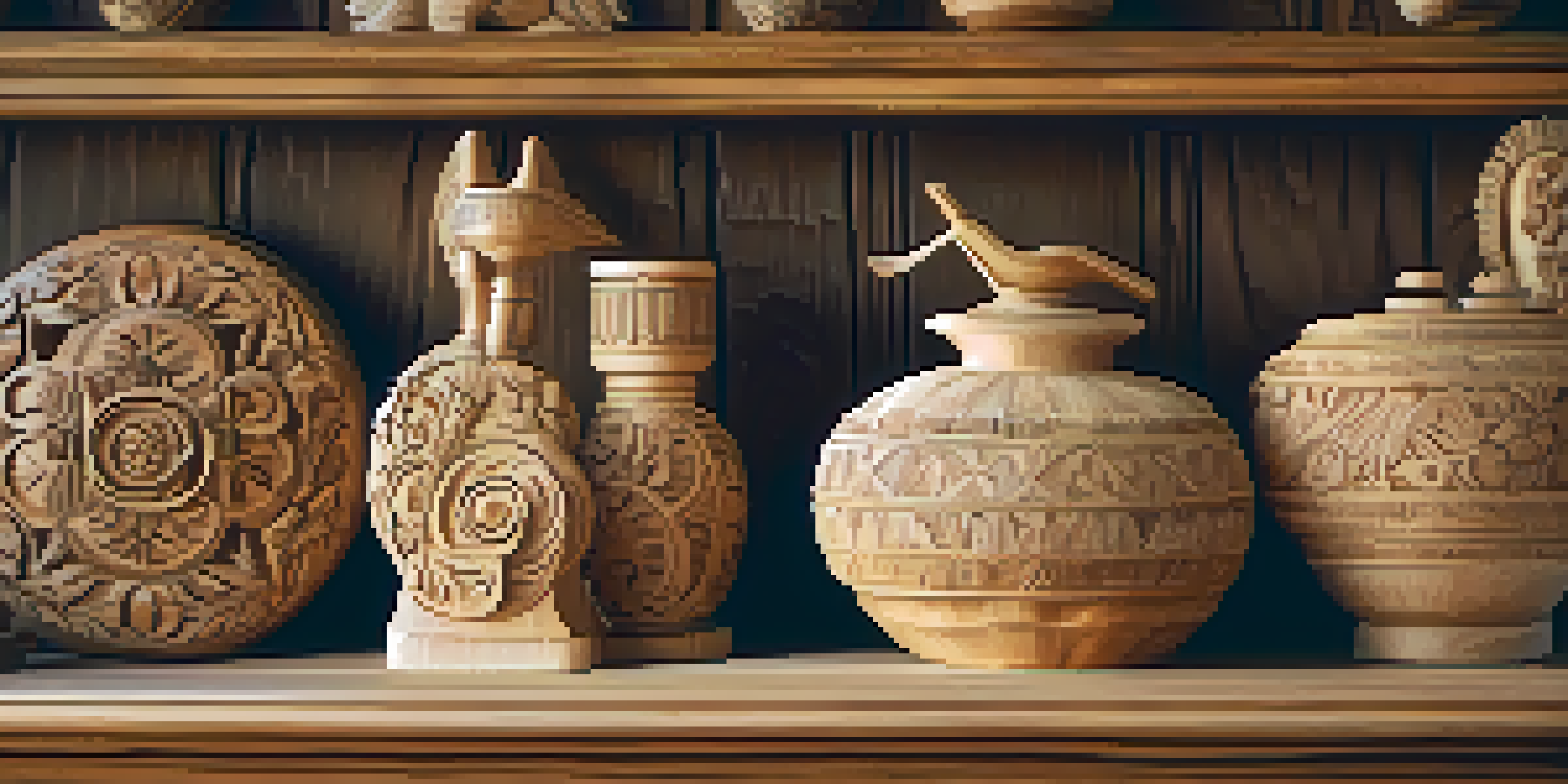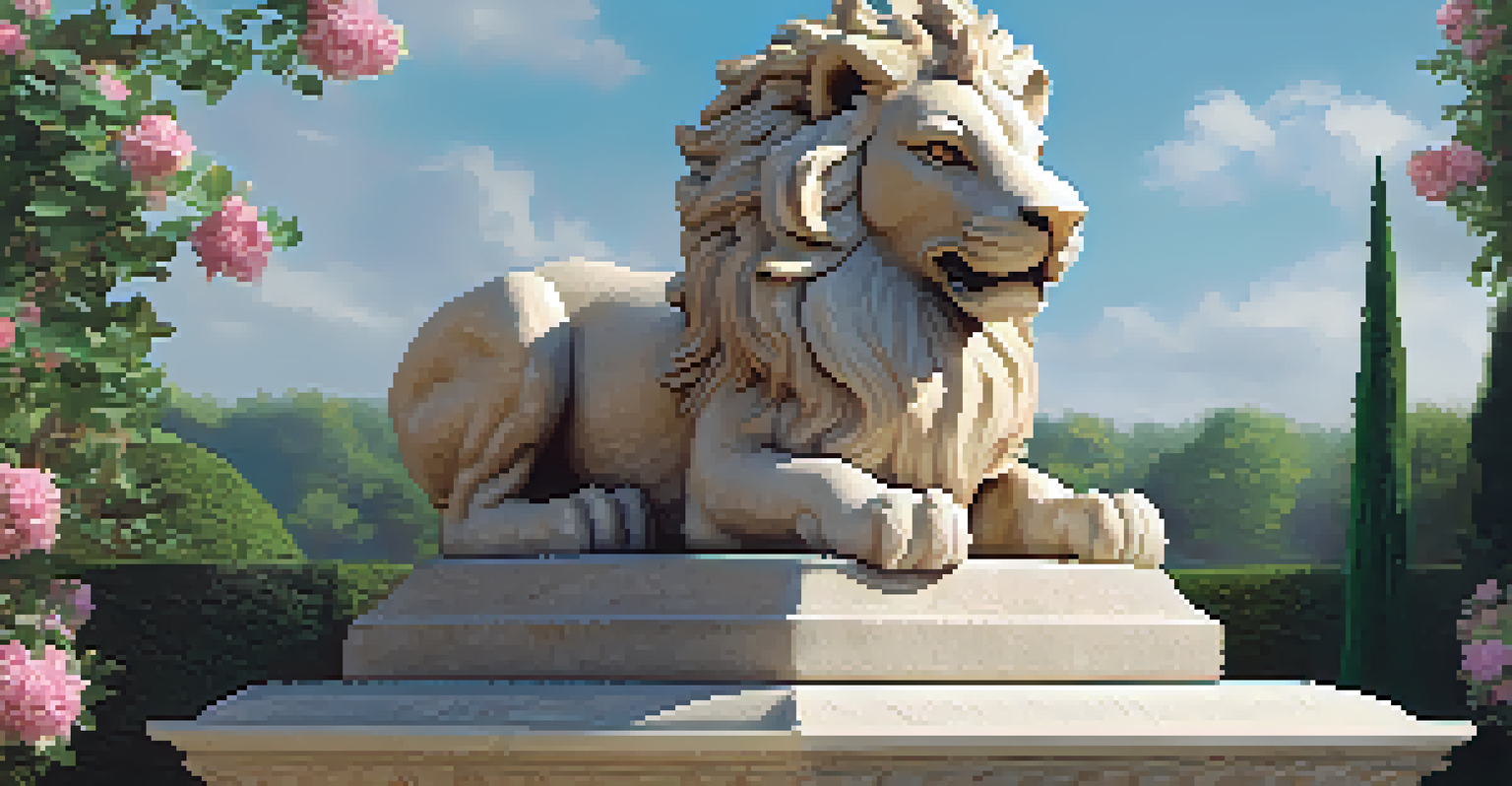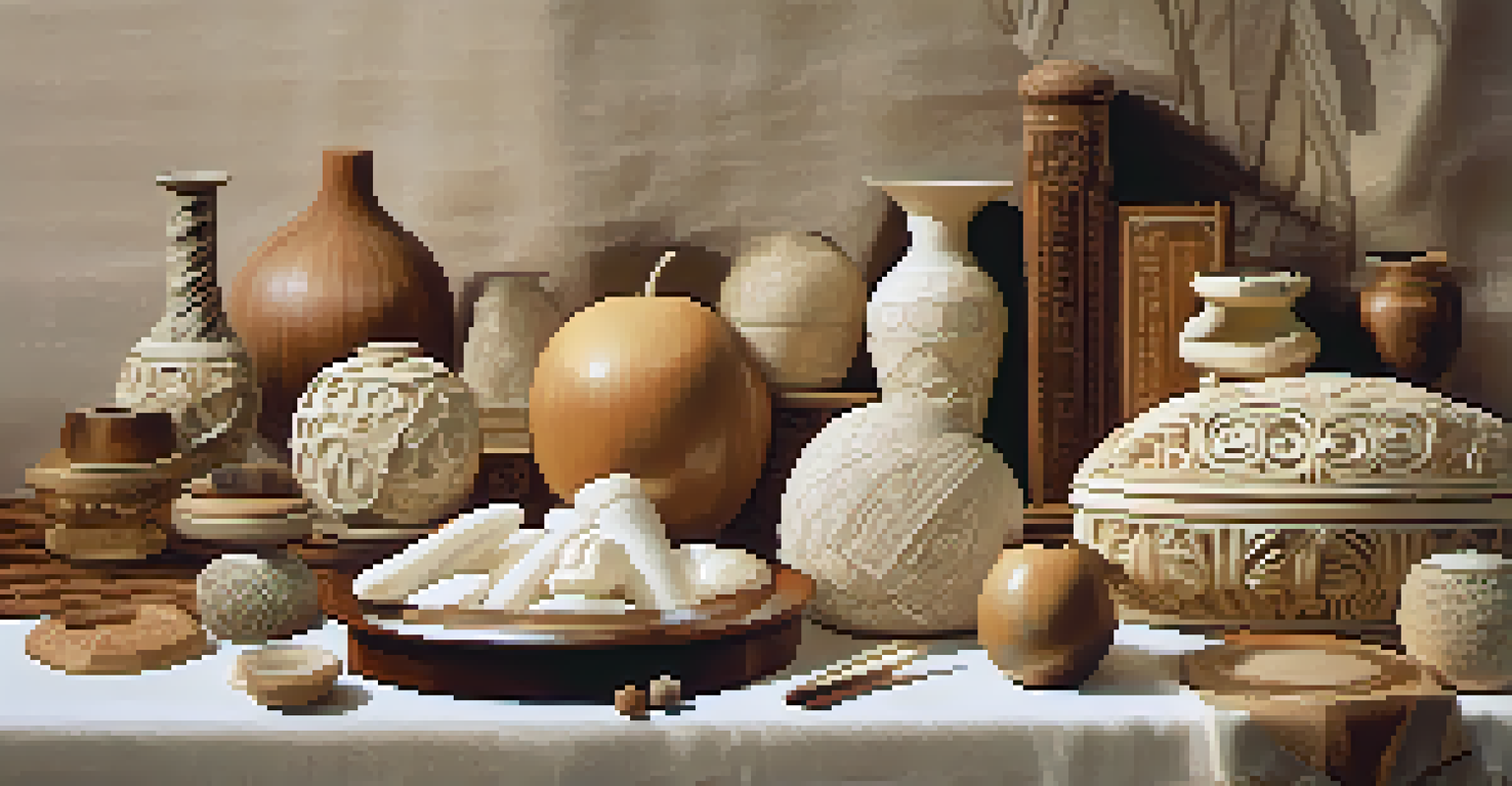Preserving Carved Materials: Challenges of Aging

Understanding the Nature of Carved Materials
Carved materials, such as wood, stone, and ivory, possess unique aesthetic and historical value. These materials often tell stories of craftsmanship and artistry, but they also face challenges as they age. Understanding their composition and the factors affecting them is crucial for effective preservation.
The past is never dead. It's not even past.
For instance, wood is a popular material for carvings due to its warmth and versatility, yet it is susceptible to moisture and pests. Stone carvings, while more durable, can still suffer from erosion and environmental factors. Each material has its own set of vulnerabilities that require tailored preservation strategies.
Aging is a natural process, but recognizing the signs early can make all the difference. Just like a favorite book that shows wear over time, carved materials need careful attention to maintain their integrity and beauty.
Environmental Factors Impacting Preservation
The environment plays a significant role in the aging of carved materials. Factors such as temperature, humidity, and light exposure can accelerate deterioration. For example, high humidity can cause wood to warp or crack, while direct sunlight can fade colors and weaken surfaces.

To mitigate these risks, it's essential to maintain a stable climate where the carved materials are displayed or stored. Using climate-controlled spaces and UV-filtering glass can help protect these precious items from the harsh elements. Think of it as creating a cozy home for your cherished possessions.
Preserving Carved Materials Matters
Understanding the unique vulnerabilities of materials like wood and stone is crucial for effective preservation.
Understanding these environmental factors allows collectors and conservators to create optimal conditions for preservation. Just like we adjust our living spaces for comfort, we must also consider the needs of carved materials to keep them thriving.
Common Challenges When Preserving Carvings
Preserving carved materials often comes with its fair share of challenges. One common issue is the presence of dirt and grime, which can accumulate over time and obscure the beauty of the carving. Regular cleaning is necessary, but it must be done carefully to avoid damaging delicate surfaces.
Preservation is a form of respect for the past.
Additionally, structural issues such as cracks or chips can pose significant problems. These imperfections not only affect the aesthetics but can also compromise the integrity of the piece. It’s a bit like a cherished piece of furniture that, if not cared for, may become unusable over time.
Addressing these challenges requires a blend of knowledge and skill. Using the right tools and methods ensures that each carving can be preserved without losing its unique character. Finding that balance is key to successful preservation.
The Role of Professional Conservators
When it comes to preserving carved materials, professional conservators are invaluable. These experts have the training and experience necessary to assess the condition of a piece and recommend appropriate treatments. Their work often involves a mix of science and art, as they strive to restore and conserve without compromising originality.
For example, a conservator might use ethically sourced materials to repair a crack in a wooden carving, ensuring that the repair is both effective and visually sympathetic to the original work. This expertise allows collectors to enjoy their pieces for generations without worrying about their deterioration.
Environmental Factors are Key
Maintaining a stable climate and reducing exposure to harmful elements is essential to protect carved items from deterioration.
Collaboration with conservators can also provide collectors with insights into the history and significance of their carvings. It's like having a knowledgeable guide who helps navigate the intricacies of preservation, ensuring that each carved piece continues to tell its story.
DIY Preservation Techniques for Carved Items
Many collectors enjoy taking a hands-on approach to preserving their carved materials. There are several DIY techniques that can help maintain the beauty and integrity of these treasures. For example, regularly dusting them with a soft cloth can prevent dirt buildup that might otherwise lead to damage.
Another useful technique is using natural oils, like linseed or walnut oil, to nourish wooden carvings. These oils can enhance the wood's natural grain and provide a protective barrier against moisture. It’s akin to how we might use lotion to keep our skin healthy and hydrated.
However, it’s important to research and understand the specific needs of each material before attempting any DIY preservation. What works for one type of carving may not be suitable for another. This ensures that your efforts are effective and safe for your beloved pieces.
The Importance of Documentation in Preservation
Documenting the condition and history of carved materials is an essential step in preservation. This practice not only helps in tracking any changes over time but also provides valuable information for future conservators. Think of it as keeping a health record for your carvings, noting any treatments or repairs they've undergone.
A thorough documentation process can include photographs, condition reports, and details about the materials used in the carving. This information can be crucial in case the piece ever requires more extensive restoration. It’s a bit like keeping a diary that captures the life of your cherished items.
Professional Help Enhances Care
Collaborating with professional conservators ensures that carved materials are preserved with the right techniques and respect for their originality.
By maintaining comprehensive records, collectors can ensure that the history of each carving is preserved alongside its physical presence. This dual focus enriches the value of the piece and its story, making it even more meaningful.
Future Trends in Carved Material Preservation
The field of preservation is constantly evolving, with new technologies and methodologies emerging to help safeguard carved materials. Innovations like 3D scanning and digital modeling can provide detailed insights into the condition of carvings, allowing for better planning of conservation efforts. It's like having a virtual health check-up for your treasured pieces.
Additionally, sustainable practices are gaining traction in the preservation community. Using eco-friendly materials and methods not only benefits the environment but also ensures that the preservation efforts are in harmony with the values of conservation. Just as we prioritize sustainability in our daily lives, the same ethos is being embraced in preservation.

Looking ahead, these trends promise to enhance the care and longevity of carved materials. By embracing both innovation and sustainability, we can ensure that future generations will appreciate the beauty and craftsmanship of these remarkable works of art.